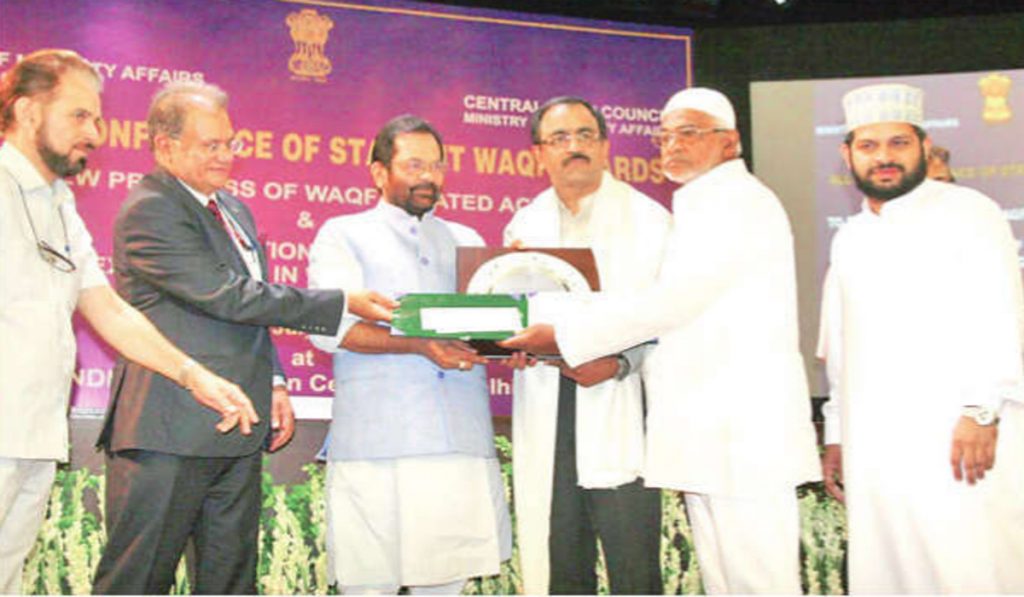The last three decades have been a golden period of resilience, economic stability, and growth for the minority communities, which include Hindus, Christians, Sikhs, Buddhists, Jains, and Parsis, as per the National Commission Act, 1992. Administered by the Ministry of Minority Affairs (MoMA) since 2006, these schemes target equitable access to education, infrastructure, and financial development, aligning with the government’s vision of Sabka Saath, Sabka Vikas (Together with All, Development for All). This article explores minority welfare schemes, their impact, and their benefits, while also addressing their impact on minority communities.
Key Welfare Schemes for Minorities
1. Prime Minister’s New 15-Point Programme: Launched in 2005 in response to the Sachar Committee Report, it focuses on equitable economic, educational, and social development, particularly for Muslims, who face systemic challenges like poverty and discrimination (36% Muslims live below the poverty line, as per NSSO 2011-12). Objectives: Enhance opportunities in education, employment, housing, and economic activities. Impact: Over 2.37 crore scholarships under this scheme have been disbursed to minority students from 2006 to 2021. Examples: Like Pradhan Mantri Jan Awas Yojana (PMAY) (31% houses allocated to minorities) and Mudra Yojana (33% loans to Muslims). However, critics note slow progress and uneven implementation across states.
2. Scholarship Schemes by Ministry of Minority Affairs: Offers several scholarships to promote education among minorities. Pre-Matric Scholarship: Provides financial aid to students from Class I to X, covering tuition and maintenance (Rs. 1 lakh annual income ceiling). Post-Matric Scholarship: For Class XI to Ph.D., including technical courses, with scholarships up to Rs. 10,000 per year (Rs. 2 lakh income ceiling). Merit-cum-Means Scholarship: For professional and technical courses, covering tuition fees up to Rs. 20,000 per year (Rs. 2.5 lakh income ceiling). Begum Hazrat Mahal Scholarship: For meritorious girl students from minority communities (Classes IX to XII), encouraging higher education. Impact: From 2007 to 2021, over 5 crore scholarships were disbursed. Challenges: Delay in disbursal, limited awareness, and complex application processes.
3. Educational Empowerment: Initiatives like the National Minorities Development and Finance Corporation (NMDFC) and Maulana Azad National Fellowship (MANF) provide financial aid for M.Phil. and Ph.D. students.
Impact: Over 2.37 crore scholarships under this scheme have been disbursed to minority students from 2006 to 2021.
Reducing dropout rates and increasing educational attainment, particularly for girls, while also providing professional training to enhance career prospects.
4. National Minorities Development and Finance Corporation (NMDFC): Established in 1994, it provides concessional loans to minorities for self-employment. Objective: Promote economic self-reliance among minority communities. Impact: Disbursed over Rs. 5,000 crore to more than 20 lakh beneficiaries since inception.
5. Maulana Azad National Fellowship (MANF): Supports minority students pursuing M.Phil. and Ph.D. Objective: Enhance research opportunities for minority students. Impact: Around 7,000 fellowships awarded since 2009.
6. Nai Udaan: This scheme supports minority candidates clearing prelims conducted by UPSC, State PSC, or SSC, aiding their preparation for government exams. Objective: Increase minority representation in government services. Impact: Over 1,500 candidates supported since 2013.
7. Qaumi Waqf Board Tarraqiati Scheme (QWBTS): Focuses on developing waqf properties for community welfare. Objective: Enhance and protect waqf assets to support education and socio-economic development. Impact: Modernised over 300 waqf properties since 2014.
8. Pradhan Mantri Jan Vikas Karyakram (PMJVK): Launched as a restructured Multi-Sectoral Development Programme, it focuses on infrastructure development in minority-concentrated areas. Objectives: Improve socio-economic conditions, reduce disparities, and provide basic amenities. Impact: Over 1.5 lakh projects sanctioned, benefiting 5 crore people since 2018.
9. USTTAD (Upgrading Skills and Training in Traditional Arts/Crafts for Development): Supports artisans from minority communities, preserving cultural heritage. Objective: Provide skill development, financial support, and market linkages to artisans. Impact: Trained over 1 lakh artisans since 2015.
10. Broader Welfare Schemes Benefiting Minorities: Schemes like PMAY, PM Mudra Yojana, and Swachh Bharat Mission also benefit minorities but are not designed exclusively for them. Impact: Around 31% of houses under PMAY and 33% of loans under Mudra Yojana allocated to minorities.
Despite their benefits, these schemes face challenges:
-
Limited Awareness: Rural minorities often lack information about available schemes.
-
Political Criticism: Some critics argue that the 15-Point Programme prioritizes Muslims over other minorities.
-
Closure of Schemes: The MANF and Pre-Matric Scholarship for Classes I to VIII were discontinued in 2022, raising concerns about reduced access.
-
Implementation Gaps: Delays in fund disbursal, uneven state-level implementation, and lack of monitoring hinder effectiveness.
Conclusion
The Government of India’s commitment to minority welfare is evident through a range of schemes aimed at inclusive development. By focusing on education, skill development, and infrastructure, the 15-Point Programme and PMJVK have empowered millions. However, addressing implementation gaps, increasing awareness, and ensuring robust monitoring can further enhance the impact. By refining these schemes and ensuring equitable access, the government can truly uplift minority communities, fostering a more inclusive India.
